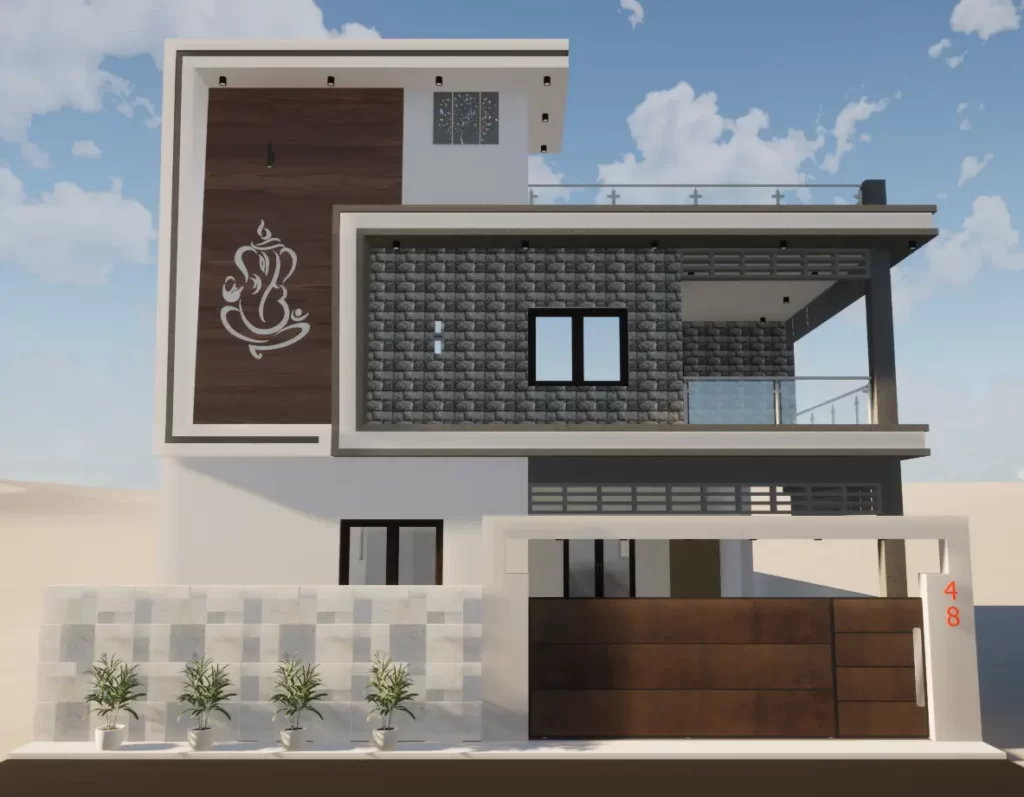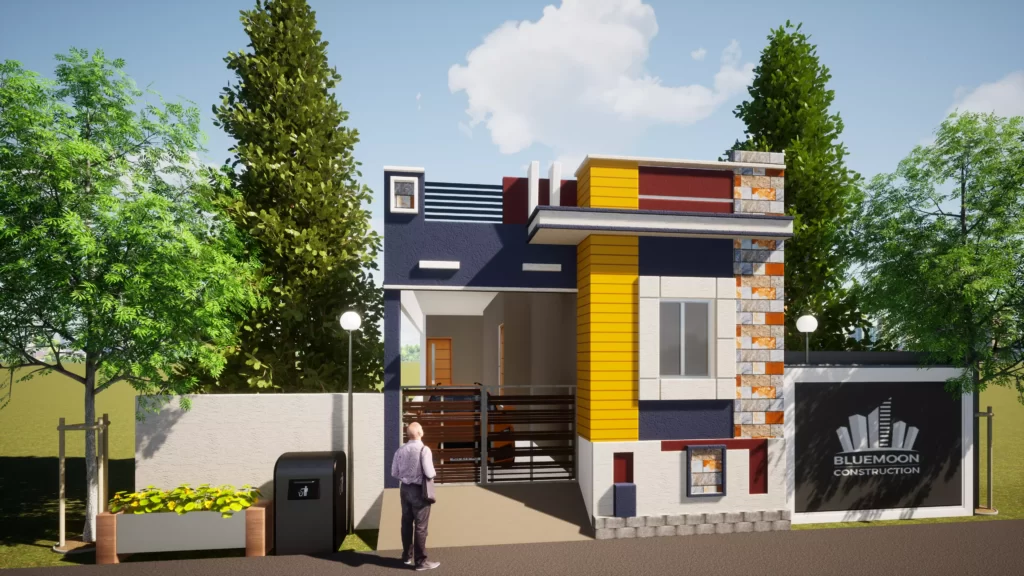Cement is the backbone of modern construction. Whether it’s towering skyscrapers, robust bridges, or your own home, cement plays a crucial role in ensuring structural integrity. However, not all cement types are the same. Among the many varieties, Ordinary Portland Cement (OPC) and Portland Pozzolana Cement (PPC) are the two most commonly used.
But how do you decide which one to use? Is OPC stronger than PPC? Is PPC more durable than OPC? Which one is more cost-effective? These are common questions that builders, contractors, and homeowners ask before starting a project.
In this detailed guide, we’ll explore the differences between OPC and PPC cement, their advantages and disadvantages, their best applications, and which one is better suited for your construction needs.
What is Cement?
Cement is a binding material used in construction that hardens when mixed with water, forming a strong and durable structure. It is the key ingredient in concrete, mortar, and plaster.
Basic Composition of Cement
Cement is primarily made of:
- Limestone (Calcium Carbonate – CaCO₃)
- Clay (Silica and Alumina Compounds)
- Iron Oxide and Gypsum
When these raw materials are heated at high temperatures in a kiln, they form clinker, which is then ground to produce cement.
Brief History of Cement
Cement has been used for thousands of years, with early civilizations using natural pozzolanic materials like volcanic ash. Modern Portland cement was first developed in the early 19th century, revolutionizing construction.
Types of Cement Used in Construction
While OPC and PPC are the most widely used, other types of cement include:
- Rapid Hardening Cement – Used for quick construction projects.
- Sulphate Resistant Cement – Ideal for structures exposed to sulphate-rich environments.
- White Cement – Used for architectural and aesthetic purposes.
- Low Heat Cement – Used for massive concrete structures like dams.
Despite these varieties, OPC and PPC dominate the market due to their versatility and availability.
What is OPC Cement?
Ordinary Portland Cement (OPC) is the most commonly used cement worldwide. It is produced by grinding clinker and gypsum without any added pozzolanic materials.
Composition of OPC
- Clinker (95%) – Provides strength
- Gypsum (5%) – Controls setting time
Manufacturing Process of OPC
- Raw Material Preparation – Limestone, clay, and iron oxide are crushed and blended.
- Clinker Formation – The mixture is heated in a kiln at 1400-1500°C.
- Grinding – Clinker is ground with gypsum to form OPC cement.
Grades of OPC Cement
OPC is available in three grades based on compressive strength after 28 days:
- OPC 33 Grade – 33 MPa strength (used in plastering and masonry work).
- OPC 43 Grade – 43 MPa strength (used in general construction).
- OPC 53 Grade – 53 MPa strength (used for high-strength structures like bridges).
What is PPC Cement?
Portland Pozzolana Cement (PPC) is a modified version of OPC that includes pozzolanic materials such as fly ash, volcanic ash, or silica fumes. These additives enhance durability and sustainability.
Composition of PPC
- Clinker (65-75%) – Provides base strength
- Pozzolanic Material (15-35%) – Enhances durability
- Gypsum (5%) – Regulates setting time
Manufacturing Process of PPC
The process is similar to OPC, except pozzolanic materials are blended with clinker during or after grinding.
Properties of PPC Cement
- More durable than OPC in aggressive environments.
- Lower heat of hydration, reducing cracking in large concrete structures.
- Environmentally friendly due to the use of industrial byproducts like fly ash.
Key Differences Between OPC and PPC Cement
When deciding between OPC (Ordinary Portland Cement) and PPC (Portland Pozzolana Cement), it is essential to understand their key differences. Here’s a detailed comparison:
1. Strength and Durability
- OPC Cement: Gains strength quickly and is ideal for projects requiring early strength, such as high-rise buildings and bridges.
- PPC Cement: Gains strength gradually but offers higher long-term durability due to its improved resistance to chemical attacks.
2. Setting Time and Workability
- OPC Cement: Has a shorter setting time, making it ideal for projects requiring fast completion.
- PPC Cement: Has a longer setting time, improving workability and reducing cracks over time.
3. Environmental Impact and Sustainability
- OPC Cement: Produces more carbon emissions due to its high clinker content.
- PPC Cement: More eco-friendly as it uses industrial byproducts like fly ash, reducing carbon footprint.
4. Cost Comparison
- OPC Cement: Generally more expensive due to its manufacturing process.
- PPC Cement: More affordable as it incorporates waste materials like fly ash, reducing production costs.
| Factor | OPC Cement | PPC Cement |
|---|---|---|
| Strength | High early strength | Gradual strength development |
| Durability | Lower resistance to chemicals | Higher durability |
| Setting Time | Faster setting | Slower setting |
| Environmental Impact | Higher CO₂ emissions | More eco-friendly |
| Cost | More expensive | More cost-effective |
Advantages of OPC Cement
1. High Early Strength
OPC cement is designed to provide high compressive strength in a short period, making it suitable for fast-track construction projects.
2. Ideal for High-Load Structures
It is the preferred choice for structures that require high initial strength, such as:
- High-rise buildings
- Bridges
- Pavements and roads
3. Suitable for Cold Climates
Since OPC sets quickly, it is beneficial in cold climates where slow-setting cement can cause delays.
Advantages of PPC Cement
1. Higher Durability
PPC cement has superior resistance to:
- Chemical attacks (sulphates and chlorides)
- Harsh weather conditions
- Moisture-related deterioration
2. Reduced Cracking
Due to its lower heat of hydration, PPC cement minimizes the risk of cracks in large concrete structures.
3. Eco-Friendly
PPC uses pozzolanic materials like fly ash, reducing the need for excessive clinker production, thus lowering CO₂ emissions.
Disadvantages of OPC Cement
1. Higher Cost
Since OPC cement consists of pure clinker, its production process is costlier compared to PPC.
2. Not Environmentally Friendly
The production of OPC releases a significant amount of carbon dioxide (CO₂) into the atmosphere, contributing to environmental pollution.
3. Less Workability
OPC cement requires more water during the mixing process, making it less workable than PPC.
Disadvantages of PPC Cement
1. Slower Strength Gain
PPC takes more time to achieve full strength, which can be a disadvantage for projects requiring early load-bearing capacity.
2. Not Ideal for Fast-Track Projects
Since PPC takes longer to set, it is not the best option for:
- Rapid construction projects
- Emergency repairs
- Cold climate conditions
Where to Use OPC Cement?
OPC cement is suitable for:
- Skyscrapers and commercial buildings – where high initial strength is necessary.
- Bridges and flyovers – requiring strong load-bearing capacity.
- Roads and pavements – needing a faster setting time.
- Cold weather construction – where quick setting is essential.
Where to Use PPC Cement?
PPC cement is ideal for:
- Residential homes – for enhanced durability and cost-effectiveness.
- Marine and coastal structures – due to its superior resistance to saltwater.
- Sewage and water treatment plants – as it resists sulphate and chloride attacks.
- Masonry work and plastering – as it reduces surface cracks.
OPC vs PPC: Which is Best for Home Construction?
For home construction, PPC cement is generally a better choice due to its:
- Enhanced durability
- Better finish for plastering
- Cost-effectiveness
However, if high initial strength is required, OPC can be used in foundations and structural elements.
OPC vs PPC: Which is Best for Large-Scale Projects?
For large-scale infrastructure projects, the choice depends on the project’s needs:
OPC is better for:
- High-rise buildings
- Bridges and roads
- Cold-weather projects
PPC is better for:
- Dams and tunnels
- Marine and sewage structures
- Sustainable projects
Cost-Effectiveness of OPC and PPC Cement
| Factor | OPC Cement | PPC Cement |
|---|---|---|
| Initial Cost | Higher | Lower |
| Long-Term Cost | Higher maintenance | Lower maintenance |
| Availability | Readily available | Widely available |
PPC is more cost-effective in the long run due to its durability and lower maintenance costs.
Environmental Impact of OPC and PPC Cement
- OPC Cement – Contributes more to carbon emissions due to its higher clinker content.
- PPC Cement – Uses pozzolanic materials, making it more eco-friendly.
If sustainability is a priority, PPC is the better choice.
Which Cement is Better for Plastering?
PPC cement is better for plastering due to:
- Smoother finish
- Better bonding
- Reduced risk of surface cracks
Future of Cement: Trends and Innovations
- Green Cement – Alternatives like geopolymer cement are being developed to reduce carbon emissions.
- Nano-Technology in Cement – Enhancing cement properties for better performance.
- Self-Healing Concrete – Using bacteria to repair cracks automatically.
Conclusion: Final Verdict on OPC vs PPC
Both OPC and PPC have their advantages and disadvantages.
Choose OPC if you need:
- High early strength
- Fast construction
- Cold-weather suitability
Choose PPC if you need:
- Long-term durability
- Better resistance to chemicals
- Eco-friendly and cost-effective cement
For most home constructions and general projects, PPC is the best choice due to its superior durability, affordability, and sustainability.
FAQs
1. Which cement is stronger, OPC or PPC?
OPC has higher early strength, while PPC gains strength gradually but becomes more durable over time.
2. Can PPC replace OPC in all applications?
PPC is suitable for most applications except projects requiring rapid strength gain, such as high-rise buildings.
3. Why is PPC cement more eco-friendly?
PPC uses industrial byproducts like fly ash, reducing the need for high-clinker production and lowering carbon emissions.
4. How to test the quality of OPC and PPC cement?
You can test cement quality through:
- Fineness test
- Setting time test
- Strength test
5. Which cement is best for long-term durability?
PPC is better for long-term durability due to its resistance to chemical attacks and reduced cracks.






